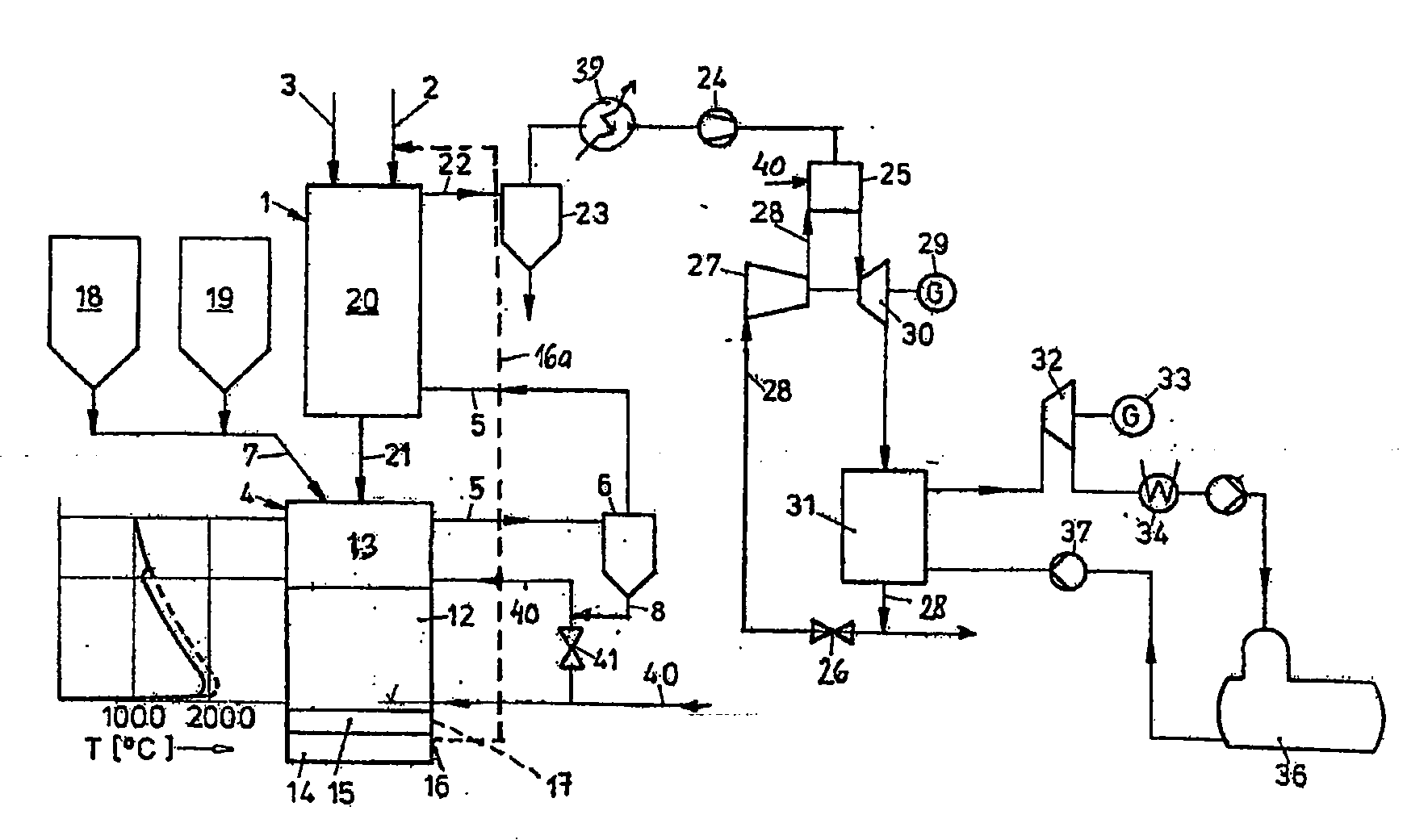Process and installation for generating electrical energy in a gas and steam turbine (combined cycle) power generating plant
a technology of gas and steam turbines and power generating plants, which is applied in the direction of electric generator control, machines/engines, mechanical equipment, etc., can solve the problems of lump coal being used, coal gas being used in the power generating plant of the combined cycle, and a series of byproducts, so as to achieve the effect of reducing the probability of pollution and increasing the carbon dioxide conten
- Summary
- Abstract
- Description
- Claims
- Application Information
AI Technical Summary
Benefits of technology
Problems solved by technology
Method used
Image
Examples
example
[0095]FIG. 1 represents an embodiment of the present invention.
[0096]Ore 2 and additives 3, such as lime, are fed into the moving bed reactor 1 by means of feeding devices. The charge 20 formed in this way is pre-heated in countercurrent with the dedusted gas from the cyclone 6, partly calcined and partly reduced. After that, this (partly) reduced charge 21 is fed by means of discharging devices through the free space 13 of the fusion gasifier 4 into its char bed 12. This char bed 12 is formed by high-temperature pyrolysis from carbon carriers 7, which come from the coal bunkers 18, 19, by the hot gasification gases of the nozzles blowing in oxygen 40. In this hot char bed 12, the (partly) reduced charge 21 is completely reduced and calcined and subsequently melted to form pig iron 14 and slag 15. The temperature conditions in the char bed 12 are indicated by way of example in the diagram represented in FIG. 1.
[0097]The pig iron 14 and the slag 15 are tapped off at intervals by way ...
PUM
 Login to View More
Login to View More Abstract
Description
Claims
Application Information
 Login to View More
Login to View More - Generate Ideas
- Intellectual Property
- Life Sciences
- Materials
- Tech Scout
- Unparalleled Data Quality
- Higher Quality Content
- 60% Fewer Hallucinations
Browse by: Latest US Patents, China's latest patents, Technical Efficacy Thesaurus, Application Domain, Technology Topic, Popular Technical Reports.
© 2025 PatSnap. All rights reserved.Legal|Privacy policy|Modern Slavery Act Transparency Statement|Sitemap|About US| Contact US: help@patsnap.com


